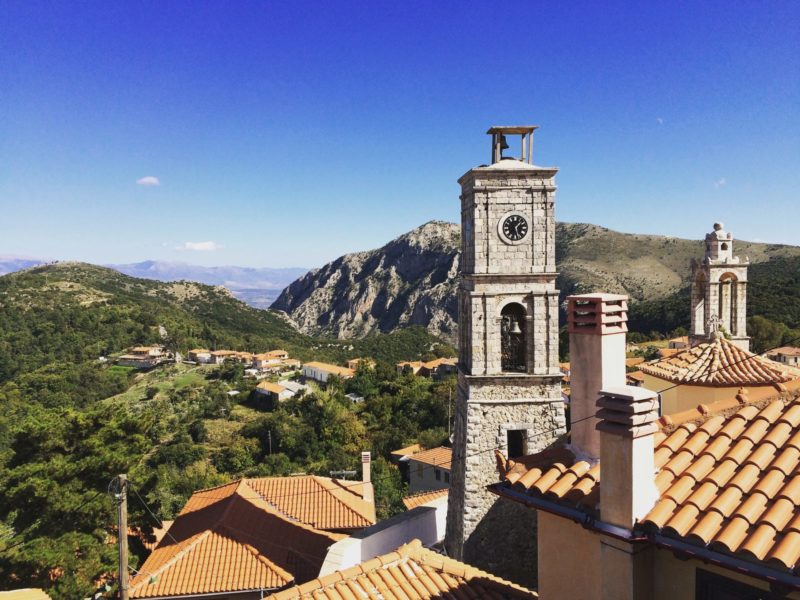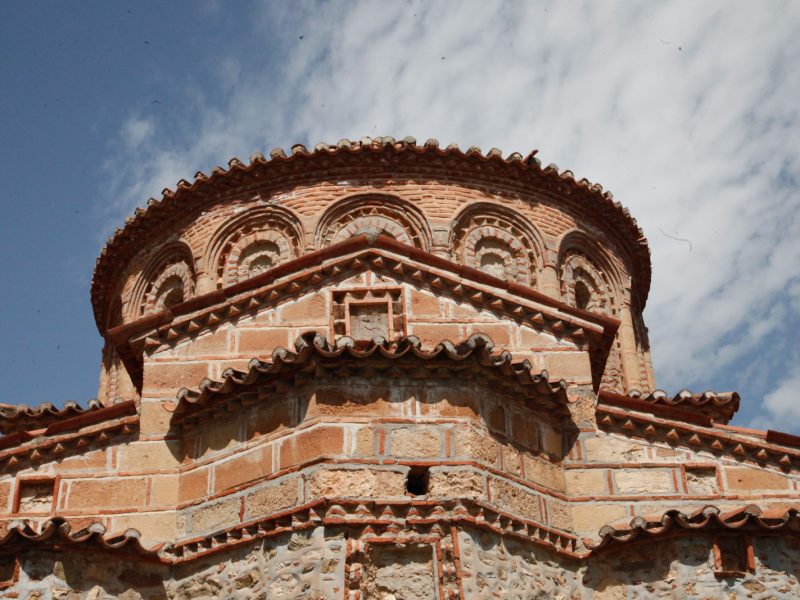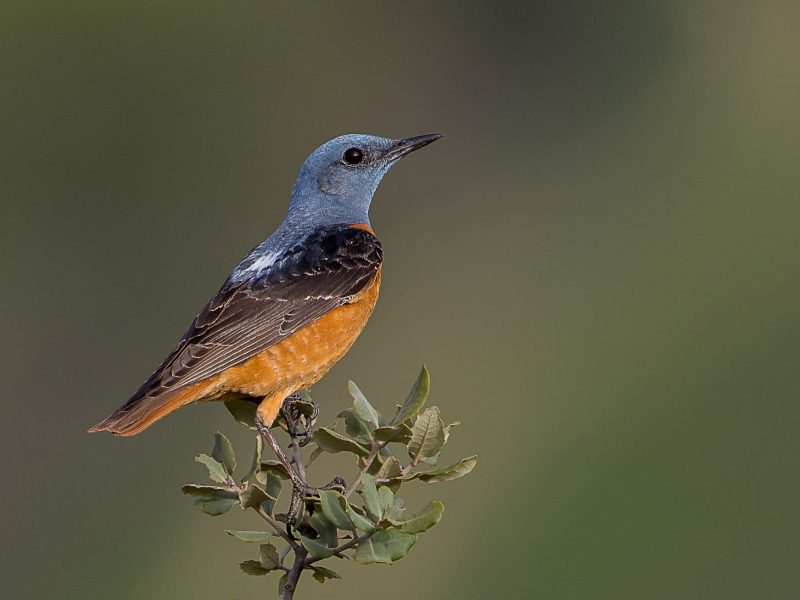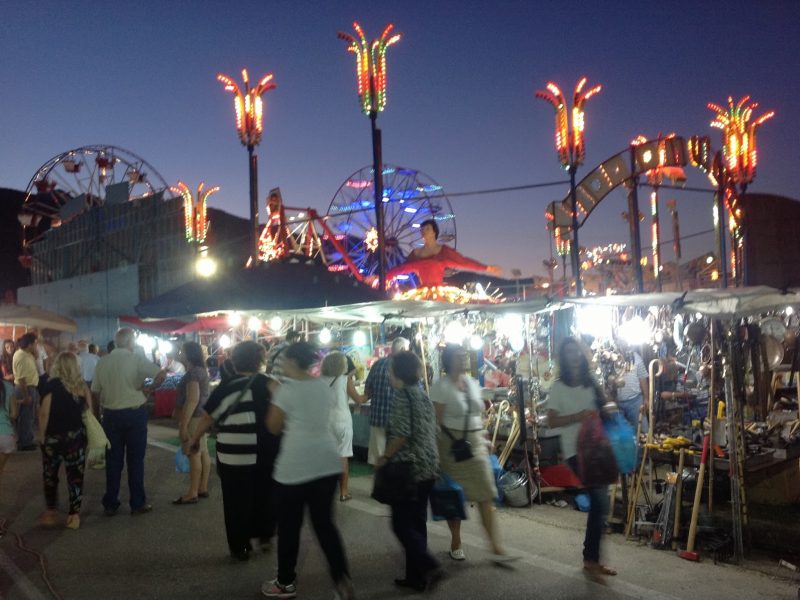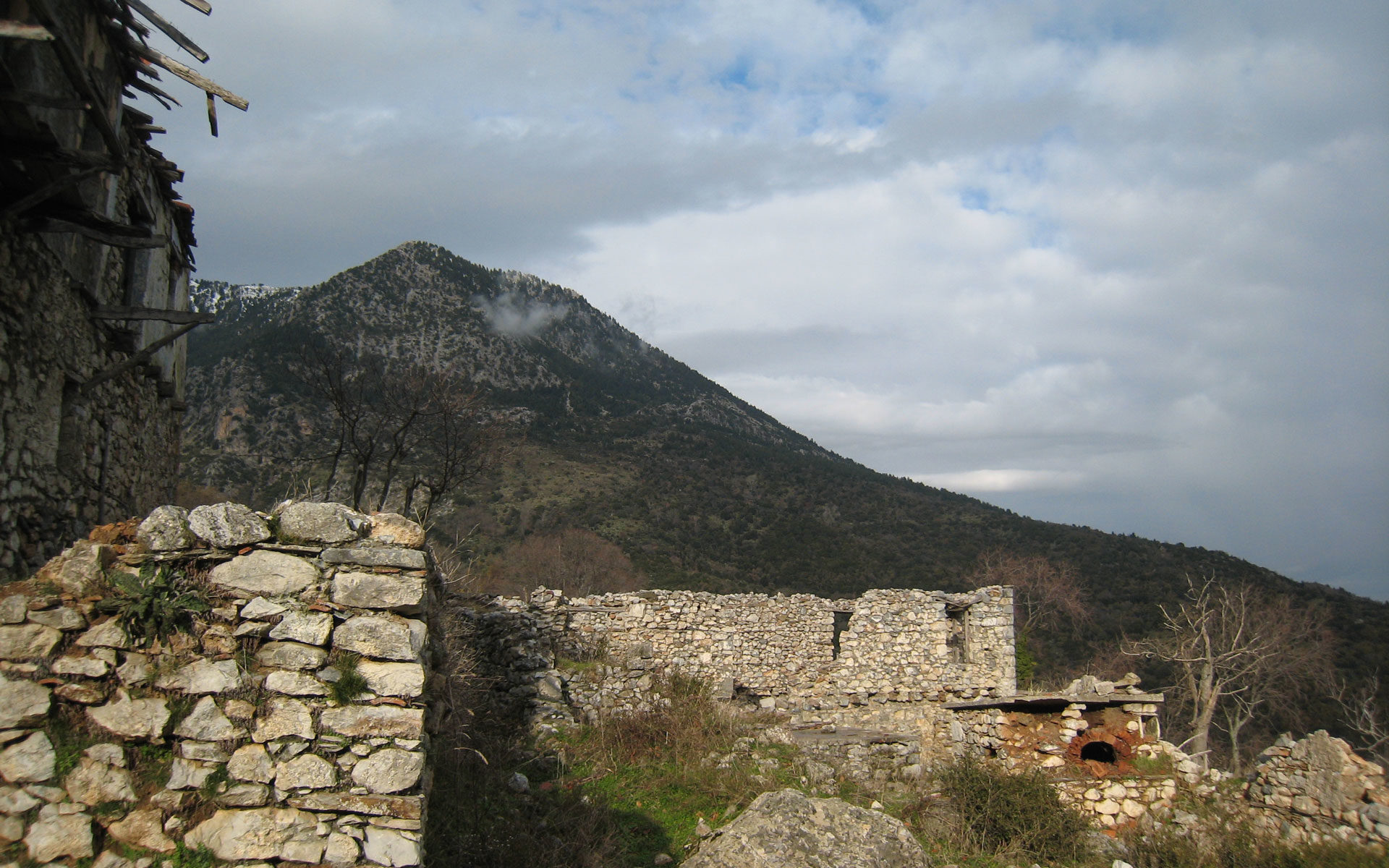
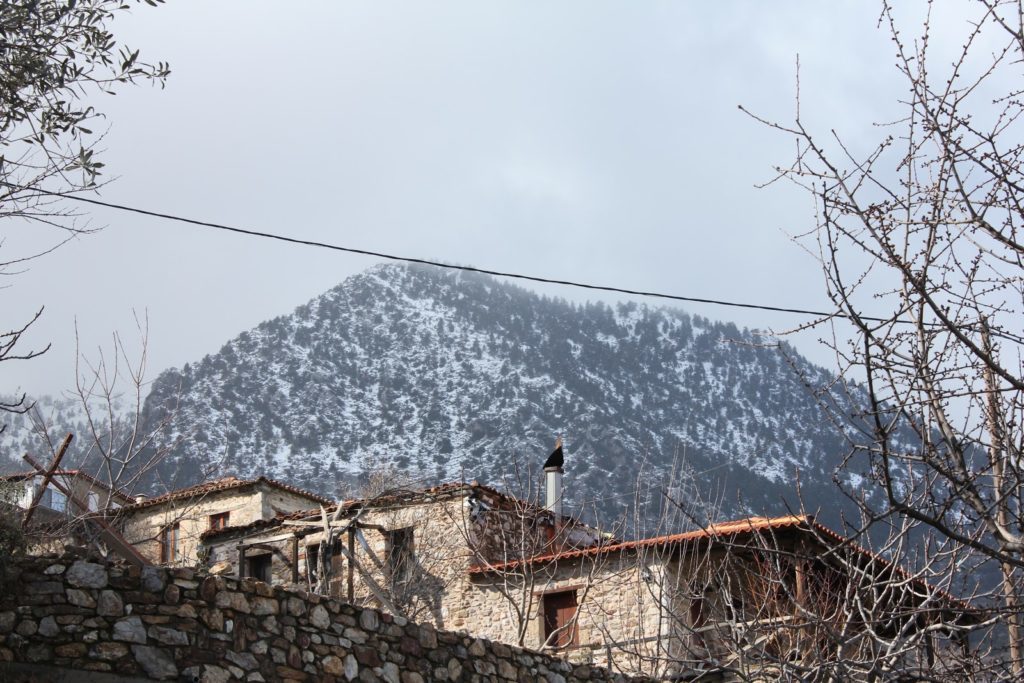
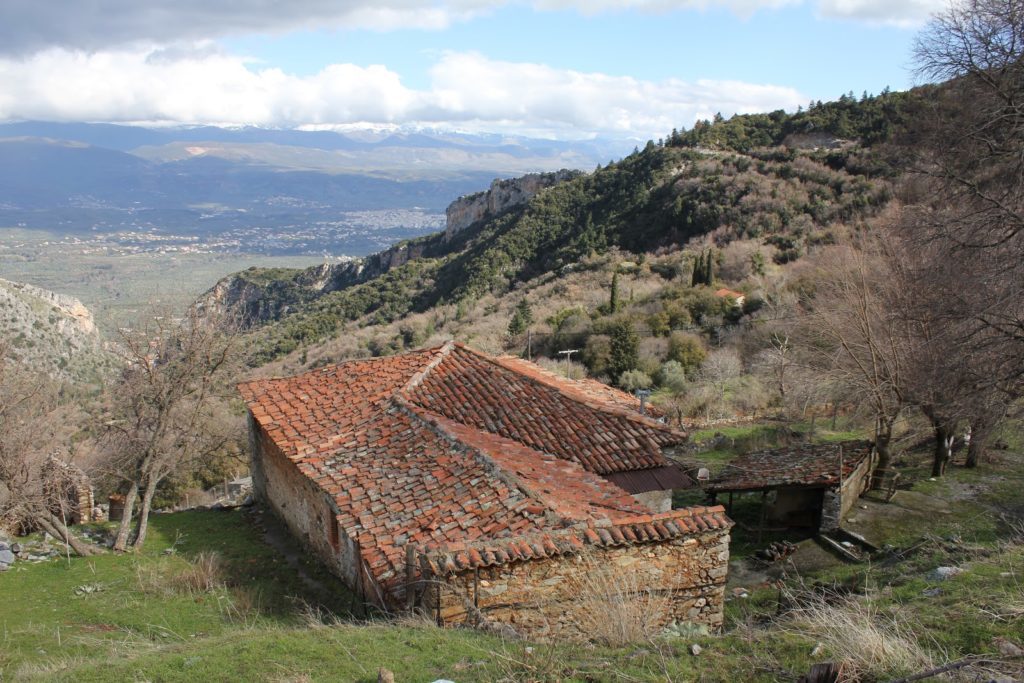
Taygeti (formerly Barsinikos) is a mountain village in the region of Laconia. It is located on the eastern slope of Taygetos mountain.
The area and especially its mountainous zone could be characterised as the hinterland of Mystras. Mystras was, at least from the middle of the 13th century, the dominant settlement not only on the eastern slope of Taygetos but also in all of Lacedaemon, since it was chosen as a regional seat by three successive empires, Frankish, Byzantine and Ottoman, as well as by another colonial power, the Venetian Republic, which coexisted for long periods with its competitors, that in the turn of the 17th to the 18th century managed to displace them and dominate in Peloponnese.
The name Barsinikos comes from the Slavic word “vrsnik” which means “hill” and “peak” and reached our days with the variation of the original “v” to “b” (Barsinikos), according to the phonetic patterns of modern Greek. The place name, since it describes natural formation and not human creation, does not reveal by itself the settlers of the place, although the influence of the Slavic presence in Peloponnese is evident, after the 7th century. As with many place names that were established during the Byzantine Middle Ages, this one may also come from indigenous subjects of the Roman Empire, linguistically influenced by their neighborhood or cohabitation with some Slavic tribe; and prevailed, because there was no prominent cause or no factor with local influence stronger than the inertia of tradition to change it. Similar Slavic phonetic influence is encountered further north with Varsova, the village with the current name Agia Eirini.
Taygeti is only 10 kilometers away from Sparta and only 5 kilometers from the village of Mystras. The route from Mystras to Taygeti is simply unique as it climbs Taygetos and at some points literally the road plunges into the forest! For hiking enthusiasts there is a passable path (cobbled street) 2.5 kilometers that starts from the village of Mystras and ends in Taygeti. Throughout the route (which is no more than an hour) it is covered by the shade of trees.
In Taygeti it is worth a walk to the Holy Monastery of Zoodochos Pigi (especially when there are small children in the company) for play, picnic and exploration. There, the view rolls down to the valley of Evrotas river and Sparta and then climbs again to the slopes of Parnonas mountain.
Source: wikipedia.gr, karidotsouflo.gr
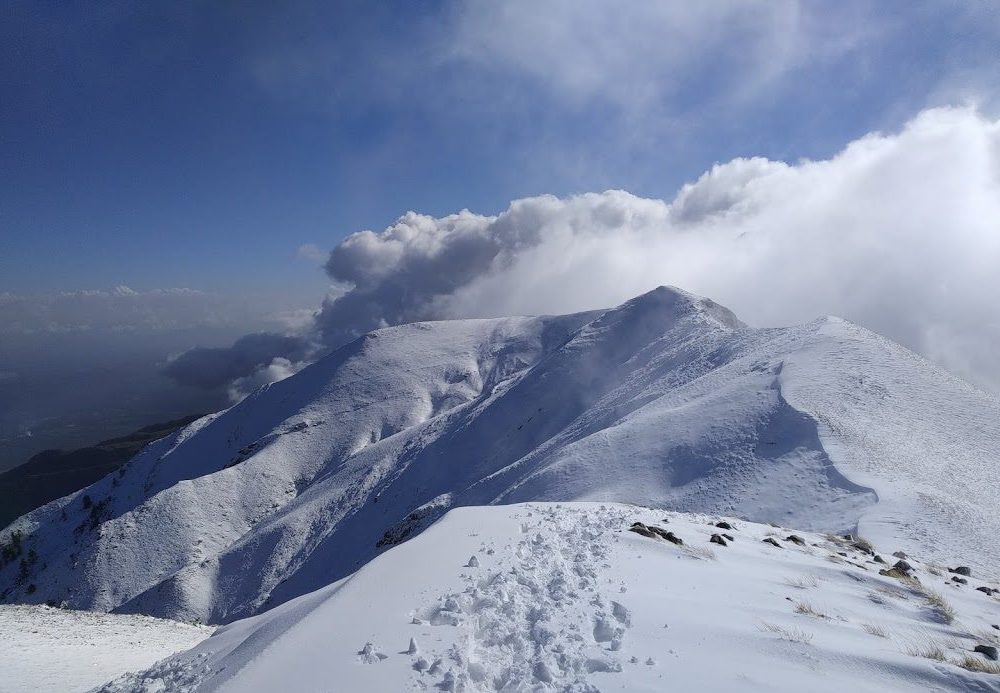
Car
From Athens: 218 km, 2.5 hours
From Kalamata: 98 km, 1 hour
The route follows the A6 (Attiki Odos), A8 (Elefsina-Corinth) and A7 (Corinth-Tripoli) highways, and then the A71 (Lefktro-Sparti) highway.
Bus
From Athens: 226 km, 3.5 hours
From Kalamata: 102 km, 1 hour
KTEL Lakonia operates several daily routes to and from Athens. These routes also serve the Sparta-Tripoli and Sparta-Corinth lines.
From the airport
From Eleftherios Venizelos – Athens Airport: 248 km, 2.5 hours
From Kalamata airport: 96 km, 1 hour
The road transition from Kalamata to Sparta takes about an hour. The route follows the A7 highway (Kalamata-Tripoli) and then the A71 highway (Lefktro-Sparti).
For road access to the paths of the present study, the following road network can be used:
The Sparti – Logastra provincial road
The Spartis – Kalamata highway
The national road Spartis – Mystras
The Spartis – Gytheio national road
The Spartis-Mystra provincial road
Amykles-Kalyvia Sochas street
Kalyvia Sochas – Sochas street
Mystra-Pikoulianika street
Mystras-Taygeti street
Taygeti – Pergandaika street
The Mystras-Vlahochori street
Agios Ioannis-Anavrytis street
In addition to the above paved roads, there are a number of existing forest and rural roads, mainly dirt, which allow access to the existing paths.
Η περιοχή προσφέρει μεγάλη ποικιλία χώρων διαμονής για όλα τα γούστα. Μπορείτε να βρείτε πέτρινα παραδοσιακά σπίτια και ξενώνες, μικρά ξενοδοχεία, resorts πολυτελείας και ενοικιαζόμενα δωμάτια, στο Μυστρά, Παρόρι, στα Πικουλιάνικα, στην Τρύπη, στην Αναβρύτη και στην Ταϋγέτη.
Για περισσότερες πληροφορίες: https://www.exploresparta.gr/tourism/diamoni/
From the main local products of the Spartan land the following stand out: olives of the “Kalamon” variety & virgin olive oil, oranges, honey, wine with the typical Kydonitsa, Mavroudi, Roditis, Athiri and Agiorgitiko varieties, synglino, sausage, pasta, trout and salmon.
Some of the most typical traditional dishes that you can look for on your trip are: Bouzopoula, Kokoras bardouniotikos, Pitaroudes, Kayanas, Kolokythokorphades.
More info at exploresparta.gr
Hiking boots, hat, sunscreen, long pants, water at least 1.5 liters, food, compass, whistle, flashlight, knife or multi-tool, watch and baton. In winter, windproof jacket, waterproof and isothermal clothes.
We also suggest that you never walk alone and always have a first aid kit with you. A well-charged mobile phone will come in handy in difficult situations.
You can hike all year round, except in the winter months when snow may close some paths. Spring and autumn are considered the best seasons thanks to mild temperatures and colourful nature. Due to the altitude, the air can be strong and icy. In summer (July, August) it may be hot enough to walk.
It is important toBefore every hike we are informed about the weather conditions.
We do not stray from the boundaries of the path.
We use fireplaces and avoid fires.
We don’t leave trash. On the path we collect rubbish that may have been left by others.
We do not destroy the vegetation, we respect the historical monuments and the local populations.
We respect wild animals and do not feed them.
Source: trailpath.gr
In the past, there were large mammals that today have disappeared such as bears, deer, roe deer, wolves and even the lynx. Today, 19 mammals have been observed in the mountain fauna, including the fox, badger, ferret, hare and hedgehog. Wildcat and jackal have also been reported although the population status of these species is not well documented. The only large mammal that is often seen is the wild boar.
In the event of the appearance of snakes, as a preventive measure, the hiker can be careful where he steps and where he puts his hands. If you encounter a snake, stay calm and keep a distance of at least two to three meters without disturbing it. In the event that you are bitten by a snake, stay calm, call 166 or 112 and take no action at all, except go to the health center with the help of an attendant. We recommend that you never walk alone.


